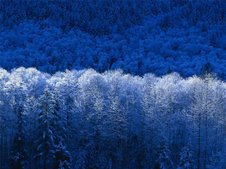Digital Raw photography—the use of raw sensor data instead of a camera-processed JPEG as a starting point for photographers—is often a topic of controversy. Photographers make statements such as "my prints look good, I don’t see any need for Raw" and "I adjust my images in Photoshop®; it works just fine" or "all those controls are too much work, I just want my software to match the JPEG." Somewhat complex and widely misunderstood, the Raw workflow was created to return control of the print to the photographer. With traditional film, years and even lifetimes were spent learning the techniques of printing in the darkroom. Modern Raw photography provides even more control with less effort, but some education is still required.
This paper will provide a foundation for the understanding of scene rendering. It will introduce the concepts, history, and tools of printmaking, and express their bearing on modern digital photography. It will demonstrate why you should invest the effort to learn the tools of Raw photography, and most importantly, it will prove there is no single "correct" way to render a print.
State of the art
The advent of the digital SLR has created a renaissance in photography. The capabilities and ease of use exhibited by digital SLRs are amazing. Much of the excitement and popularity driving this renaissance can be traced directly to the quality of the prints produced by digital SLRs. If you expose your subject well and choose the right shooting mode, these cameras will produce a very good-looking print with little effort.
"Point and shoot" is a paradigm engrained in our minds by the marketing of a multi-billion dollar industry. For holiday snapshots, a child’s dance recital, or a high school football game, these cameras produce excellent keepsakes that document and reinforce our memories. With the click of a button, these modern marvels produce a digital file in the form of a JPEG, ready to be printed with no intervention. What more could you ask for?
To reach this stunning level of automation, the camera is making many decisions about how to render a scene and create the print. Translating reality to a photographic print is not a simple task, and the methods used are sophisticated and proprietary. Camera manufacturers have applied years of research and development to the unique algorithms inside each camera. Given a scene, each camera will arrive at a different result. None of these cameras typically deliver results that can objectively be considered "wrong," and in fact each photographer may develop a preference for a camera’s results. Because there are so many different possible ways to render a scene into a print, it becomes important to differentiate between the science of photographic imaging and the art of photography. We will show that a photograph cannot be an accurate reproduction of the light that existed in reality: A photograph is always an interpretation.
skip to main |
skip to sidebar

BEAUTIFULL
THIS IS A VERY USEFULL SITE. IT CONTAINS INTERESTING ARTICLES YOU CAN SEARCH ARTICLES AND READ NEWS THROUGH THIS SITE AND IMPORTANT THING IS THAT YOU CAN ADVERTISE AND CAN SEE MANY ADVERTISEMENT ON THIS SITE
please click here
search google sites here
please click this
visit us
WELCOME

BEAUTIFULL
Labels
- adsence (7)
- google (2)
- google search (1)
- green (1)
- search (3)
Blog Archive
About Me
- ANOOP
- KANNUR, KERALA, India
- i am anoop.p from kannur district in india. this site is very helpfull to you.there are lots of contents to search and to look


1 comment:
Hello there! This blog post couldn't be written any better! Looking through this article reminds me of my previous roommate! He continually kept talking about this. I most certainly will send this information to him. Pretty sure he'll have
a good read. I appreciate you for sharing!
My weblog; http://www.ialt.ie/index.php/member/31757/
Post a Comment